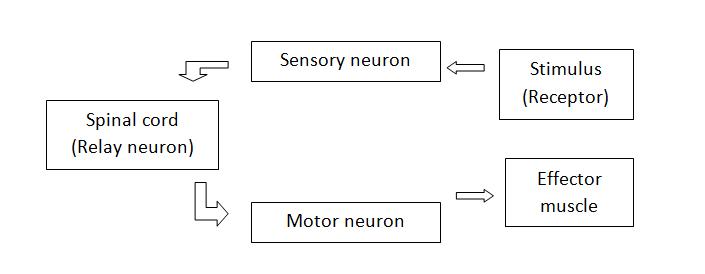Reflex Response
Key Questions
-
Answer:
A reflex is a rapid, involuntary response to a stimulus.
Explanation:
A reflex arc is the pathway traveled by the nerve impulses during a reflex. Most reflexes are spinal reflexes with pathways that traverse only the spinal cord.
During a spinal reflex, information may be transmitted to the brain, but it is the spinal cord, and not the brain, that is responsible for the integration of sensory information and a response transmitted to motor neurons.
A reflex arc involves the following components:
-
The receptor is the part of the neuron (usually a dendrite) that detects a stimulus.
-
The sensory neuron transmits the impulse to the spinal cord.
-
The integration center involves one synapse (monosynaptic reflex arc) or two or more synapses (polysynaptic reflex arc) in the gray matter of the spinal cord.
-
A motor neuron transmits a nerve impulse from the spinal cord to a peripheral region.
-
An effector is a muscle or gland that receives the impulse form the motor neuron.
In somatic reflexes, the effector is skeletal muscle.
In autonomic (visceral) reflexes, the effector is smooth or cardiac muscle, or a gland.

An example of this that often used to check the status of a head injured person is:
The constriction of pupils in response to bright light is called the pupillary light reflex. If the light is shining directly into one eye, then the pupil in that eye will constrict (a direct response), but so will the pupil in the non-illuminated eye (a consensual response).This reflex involves two cranial nerves: the optic nerve, which senses the light, and the oculomotor nerve, which constricts both pupils.
-